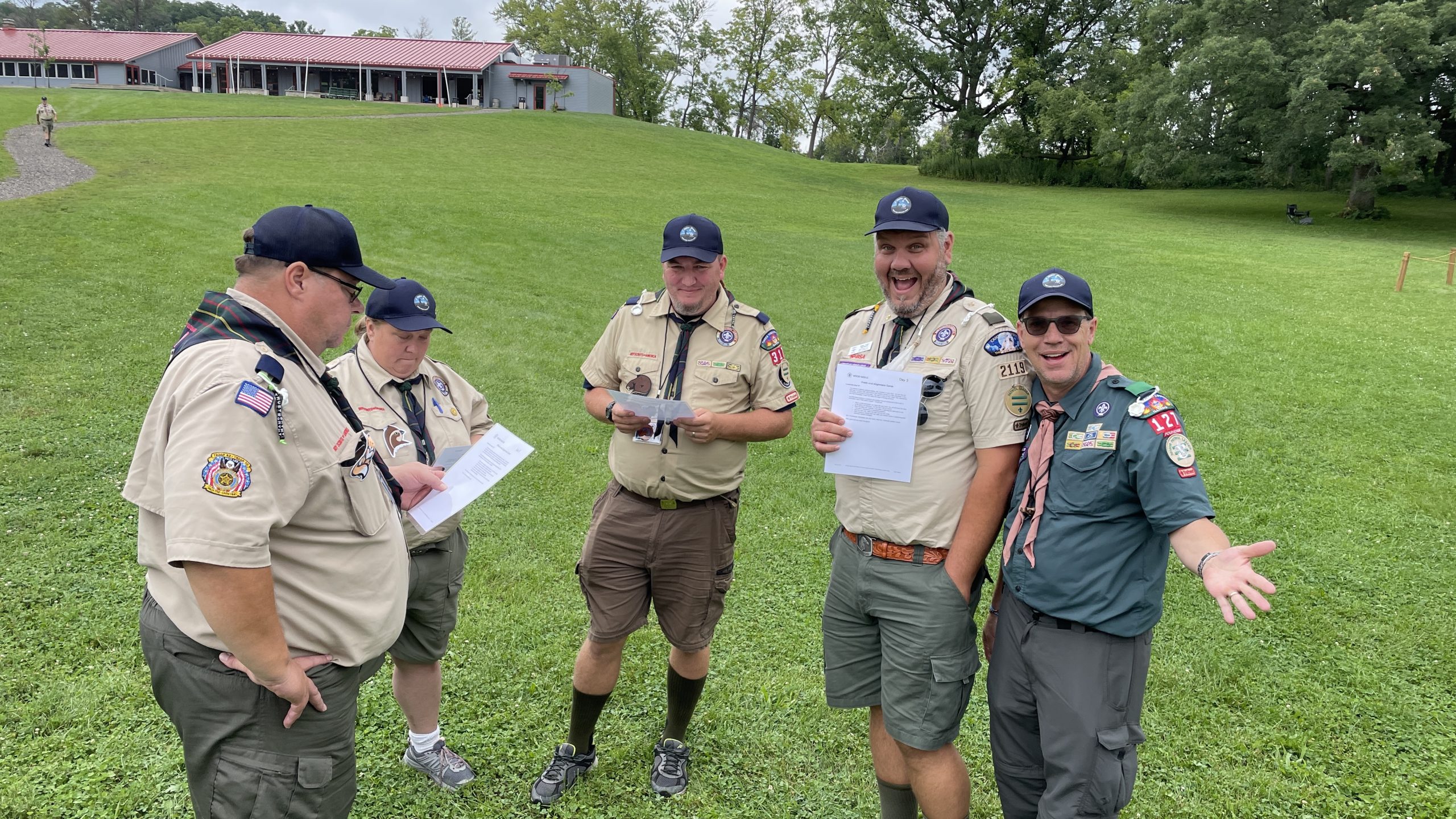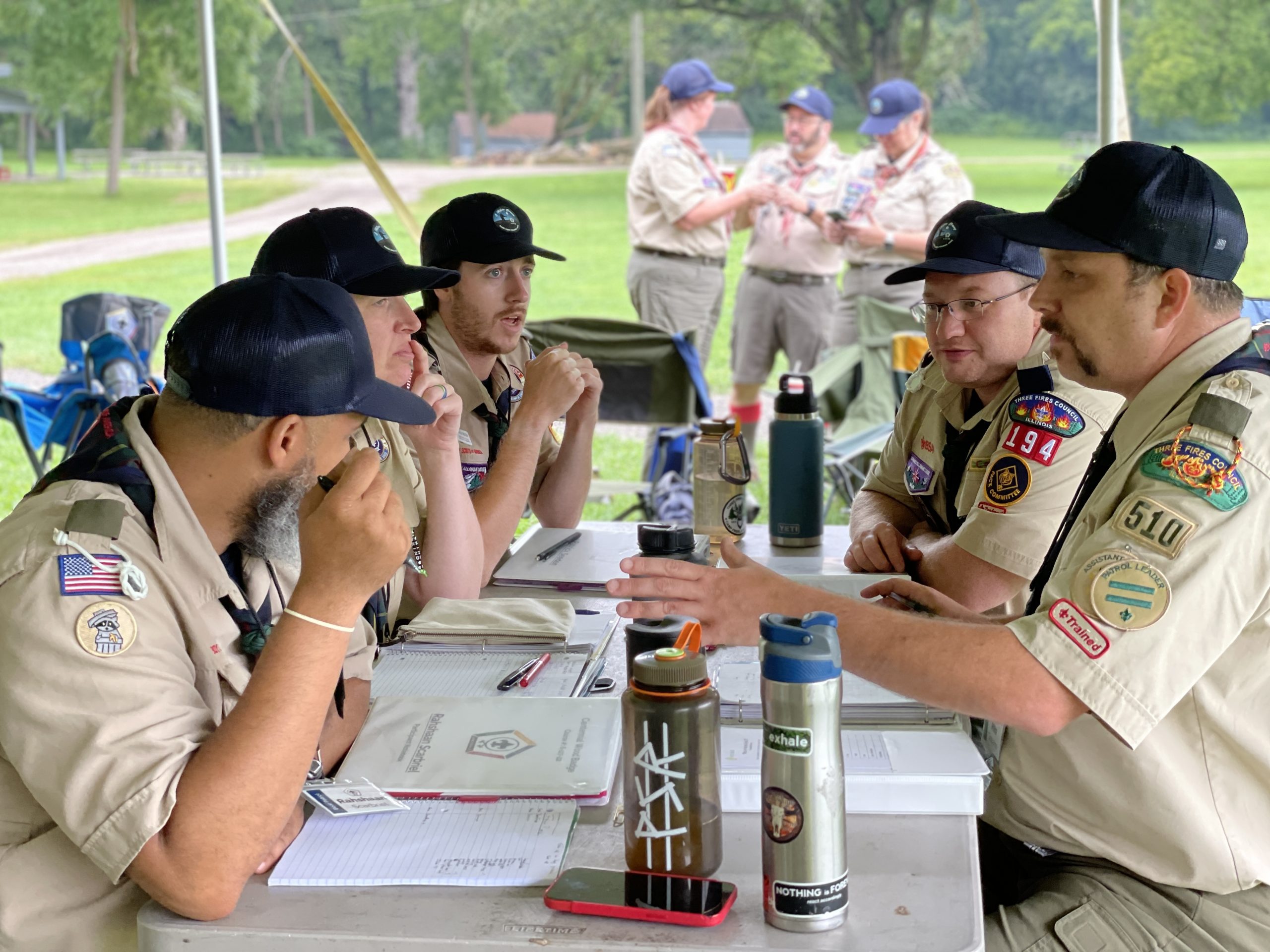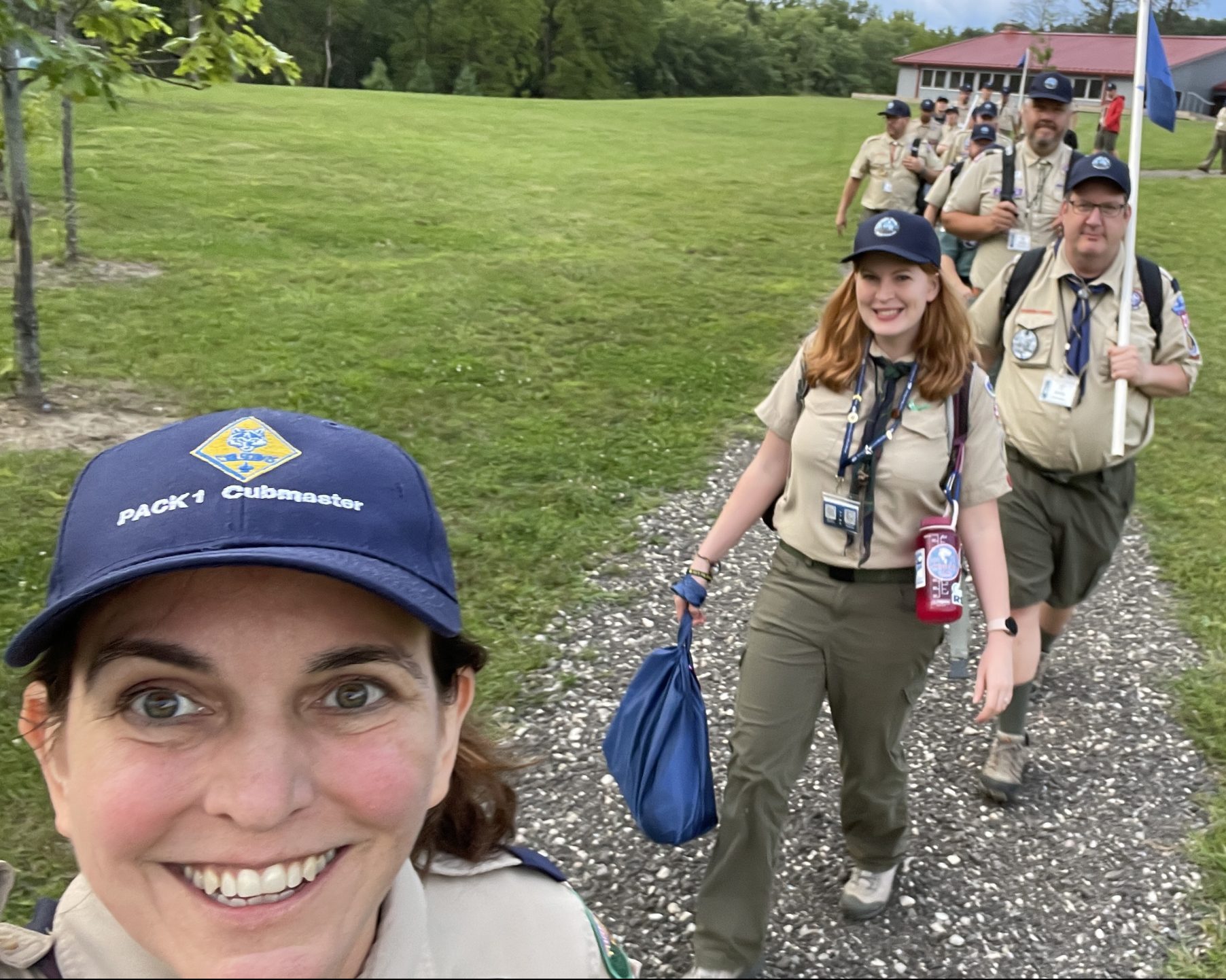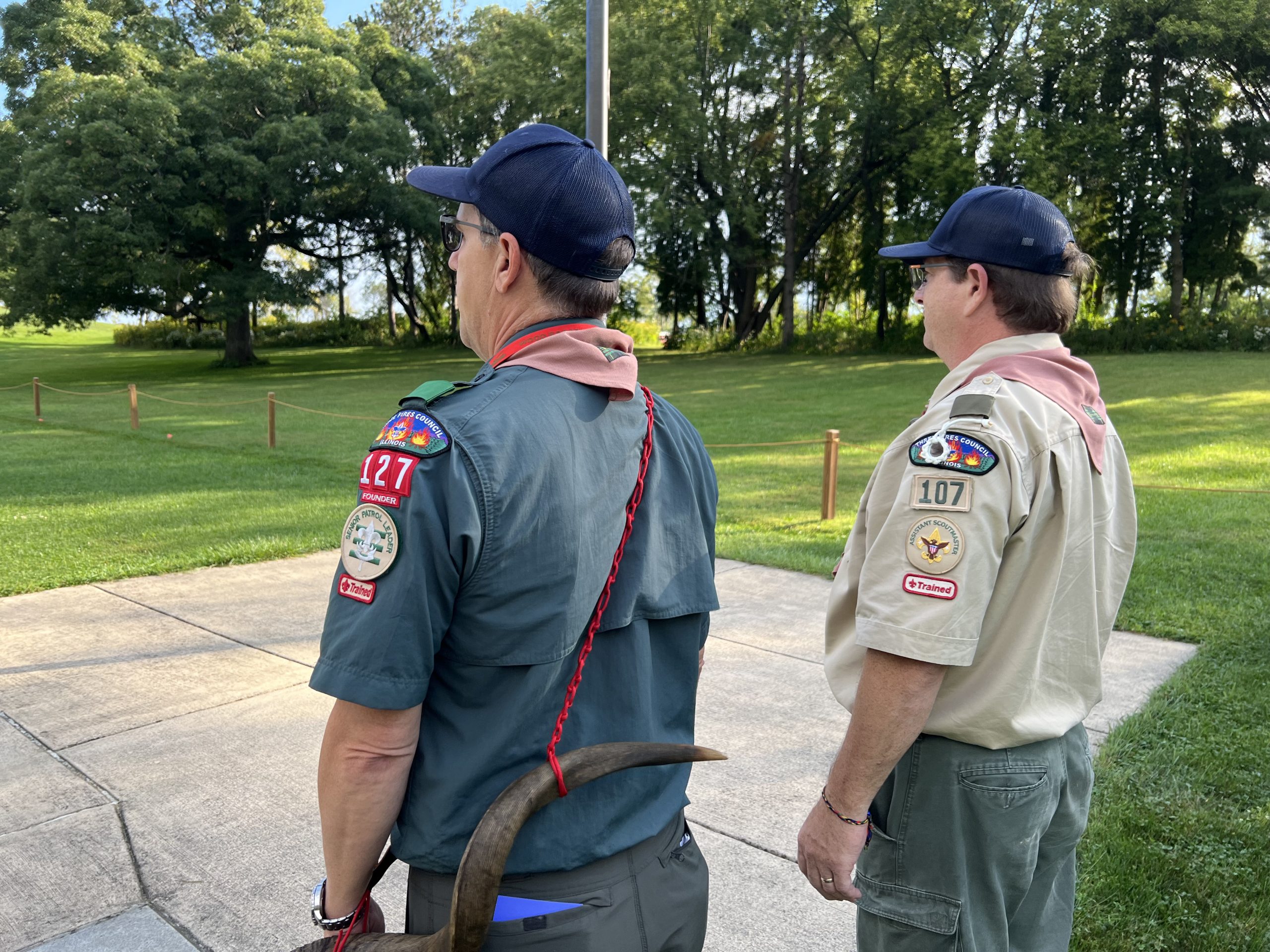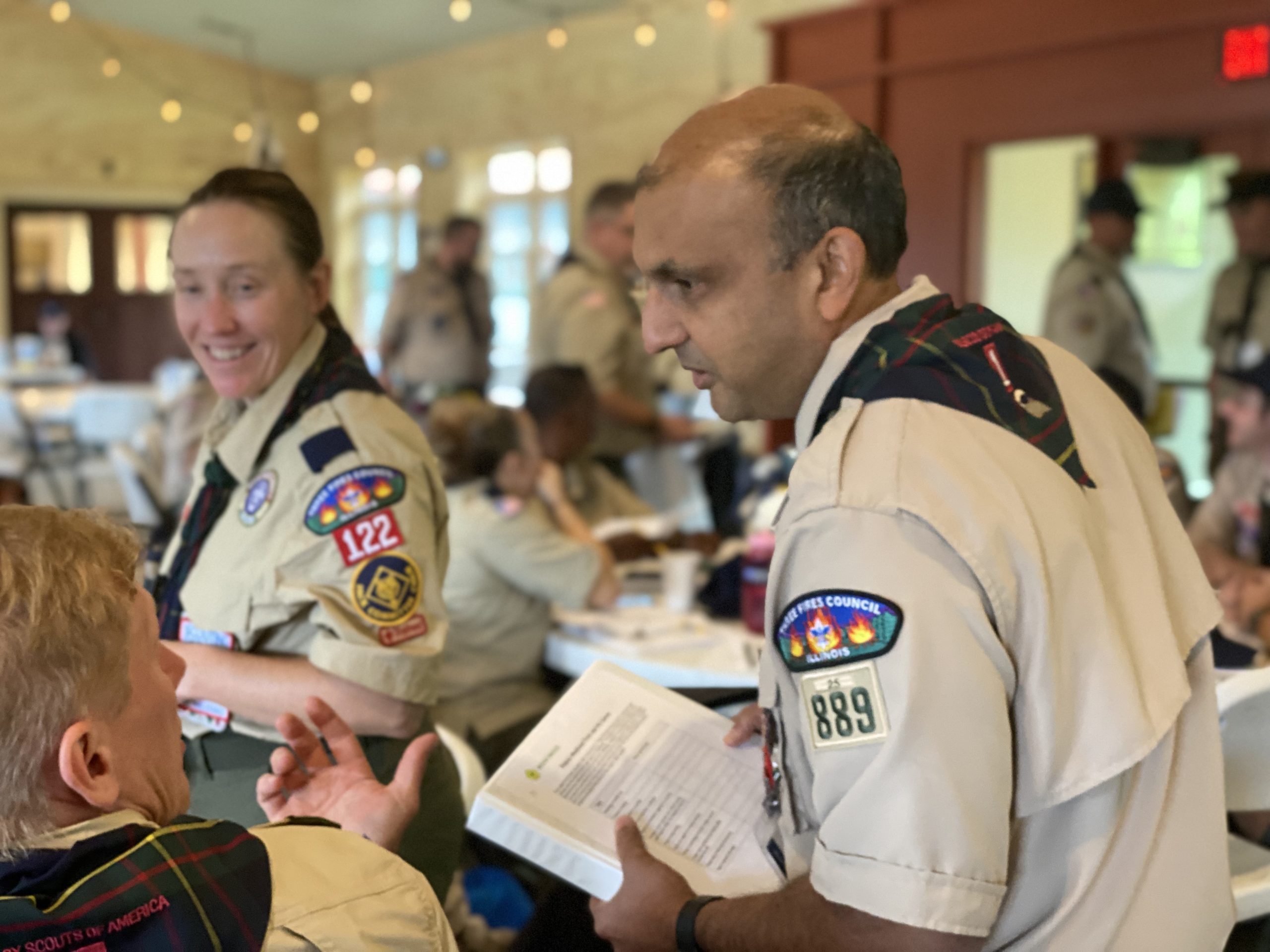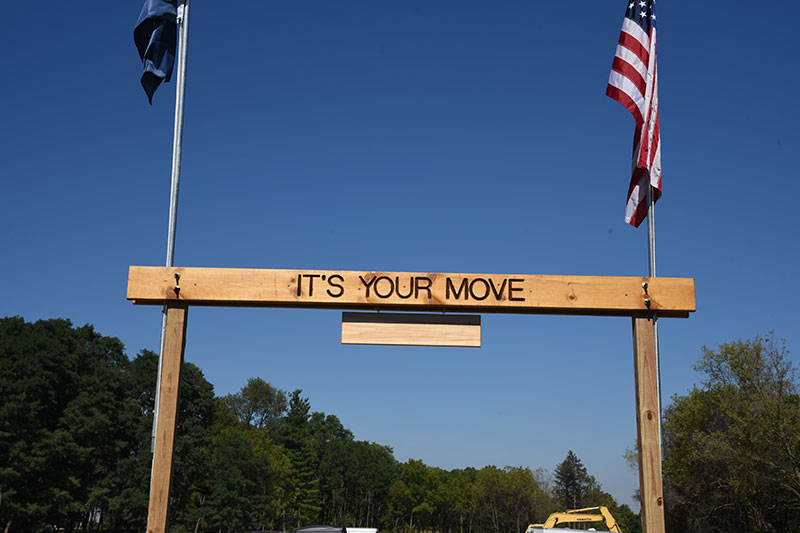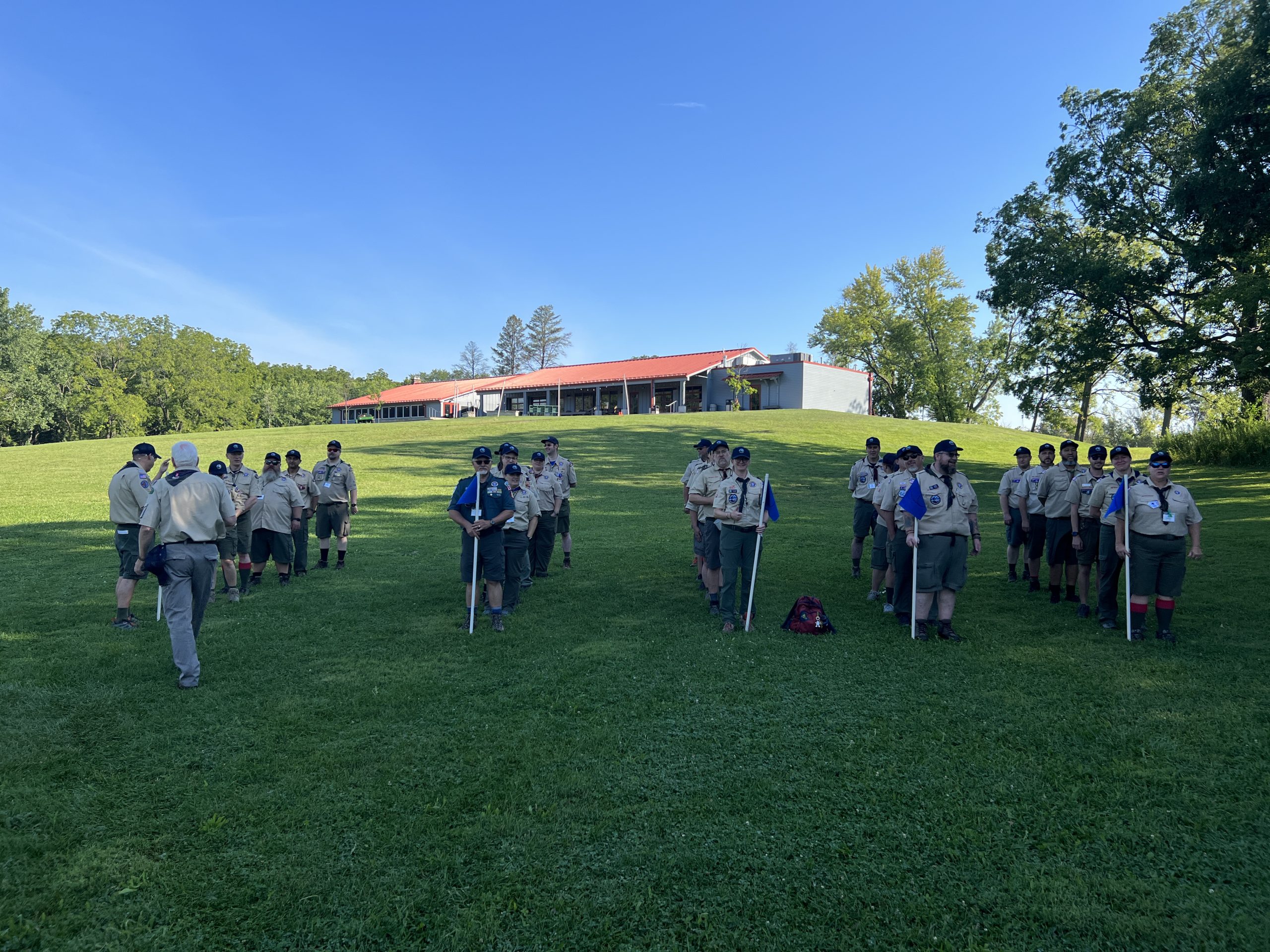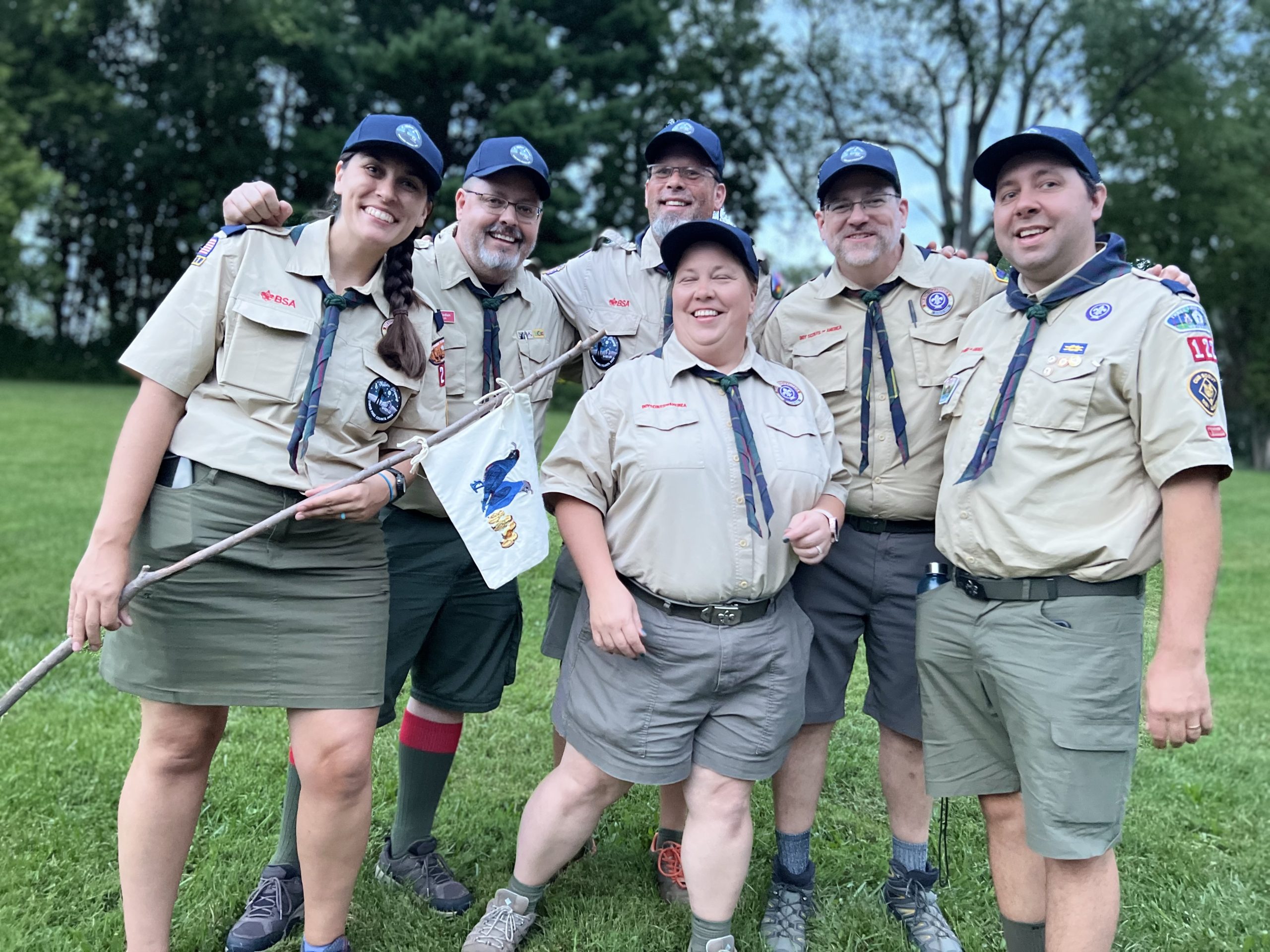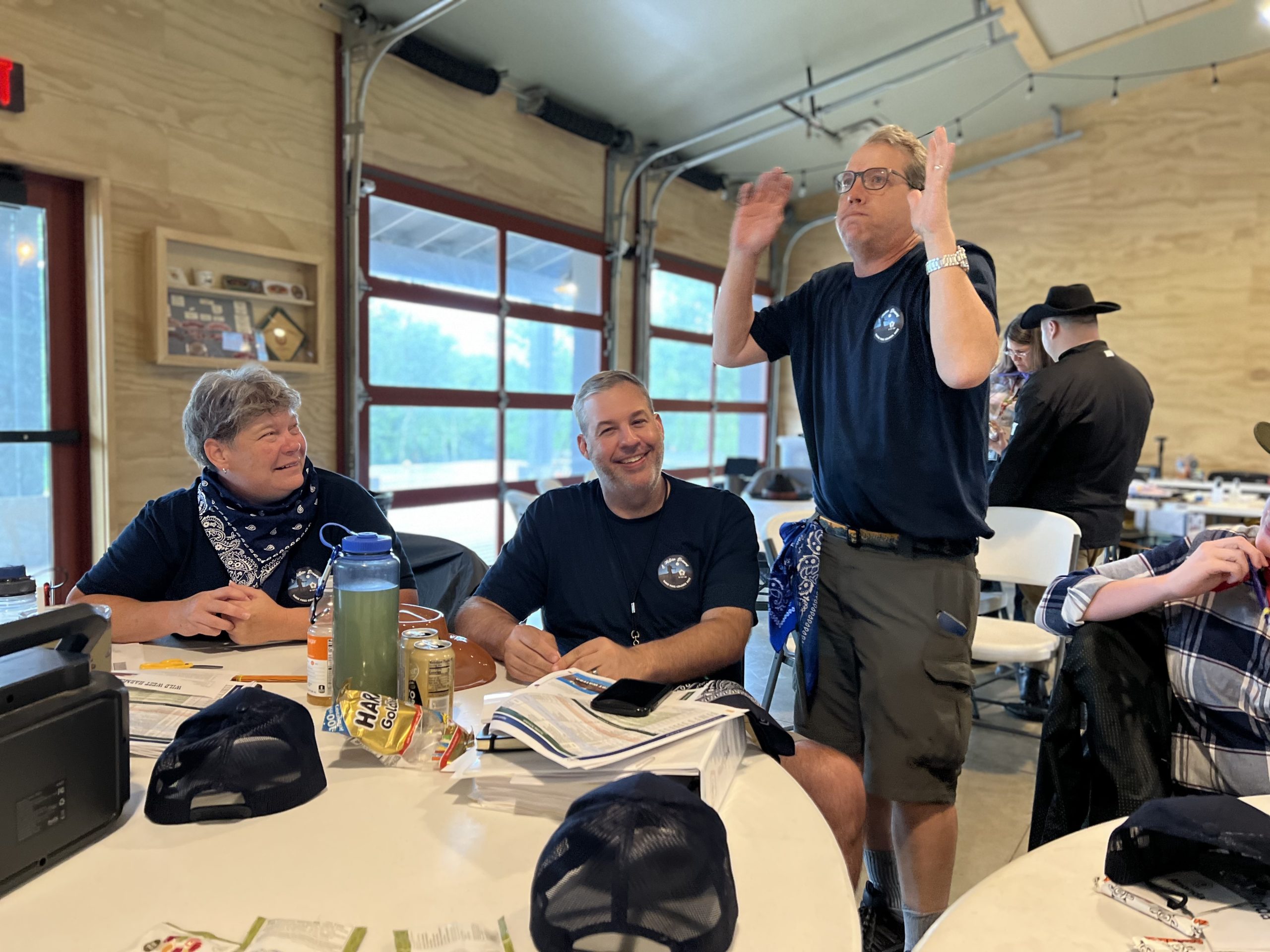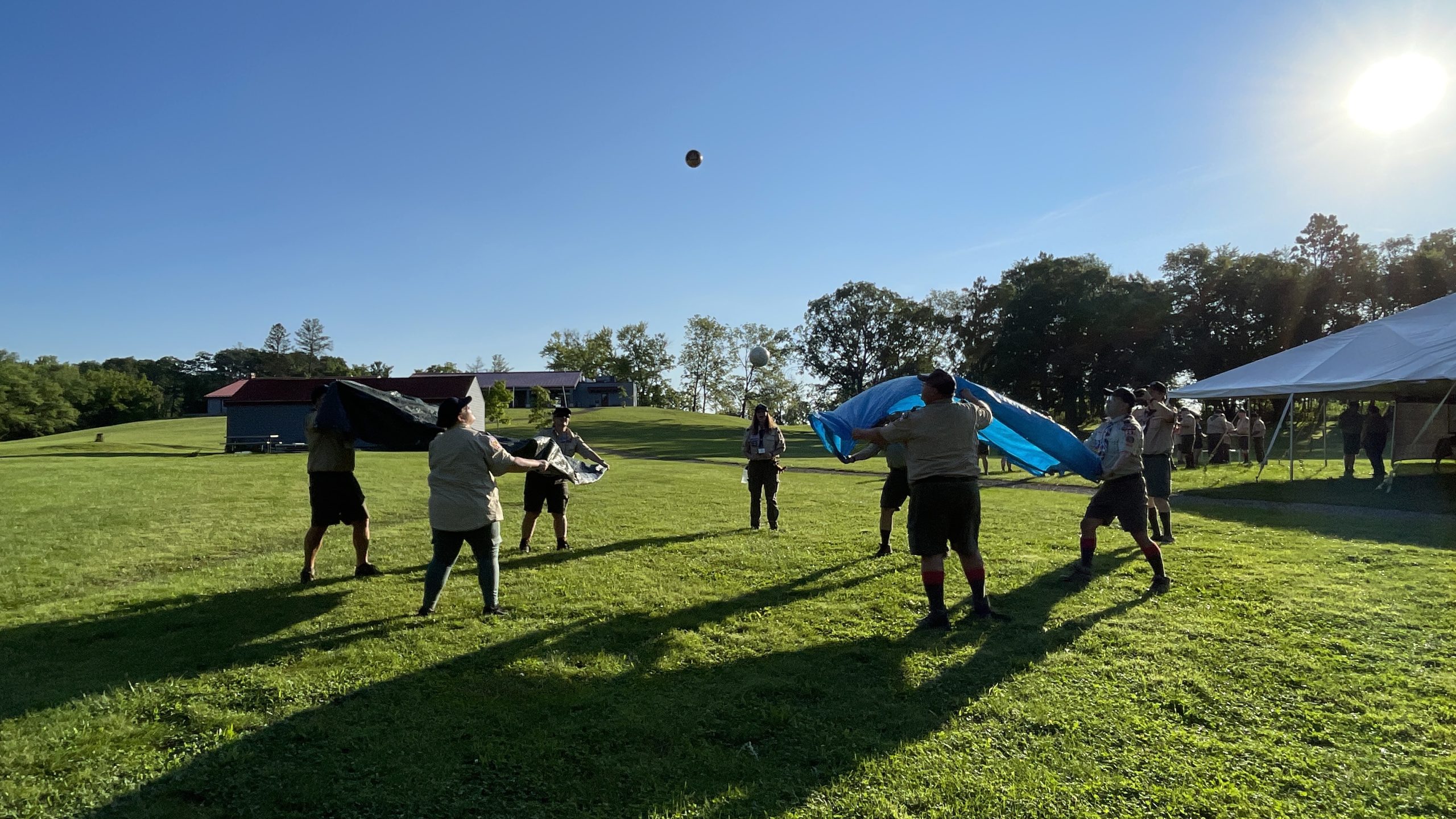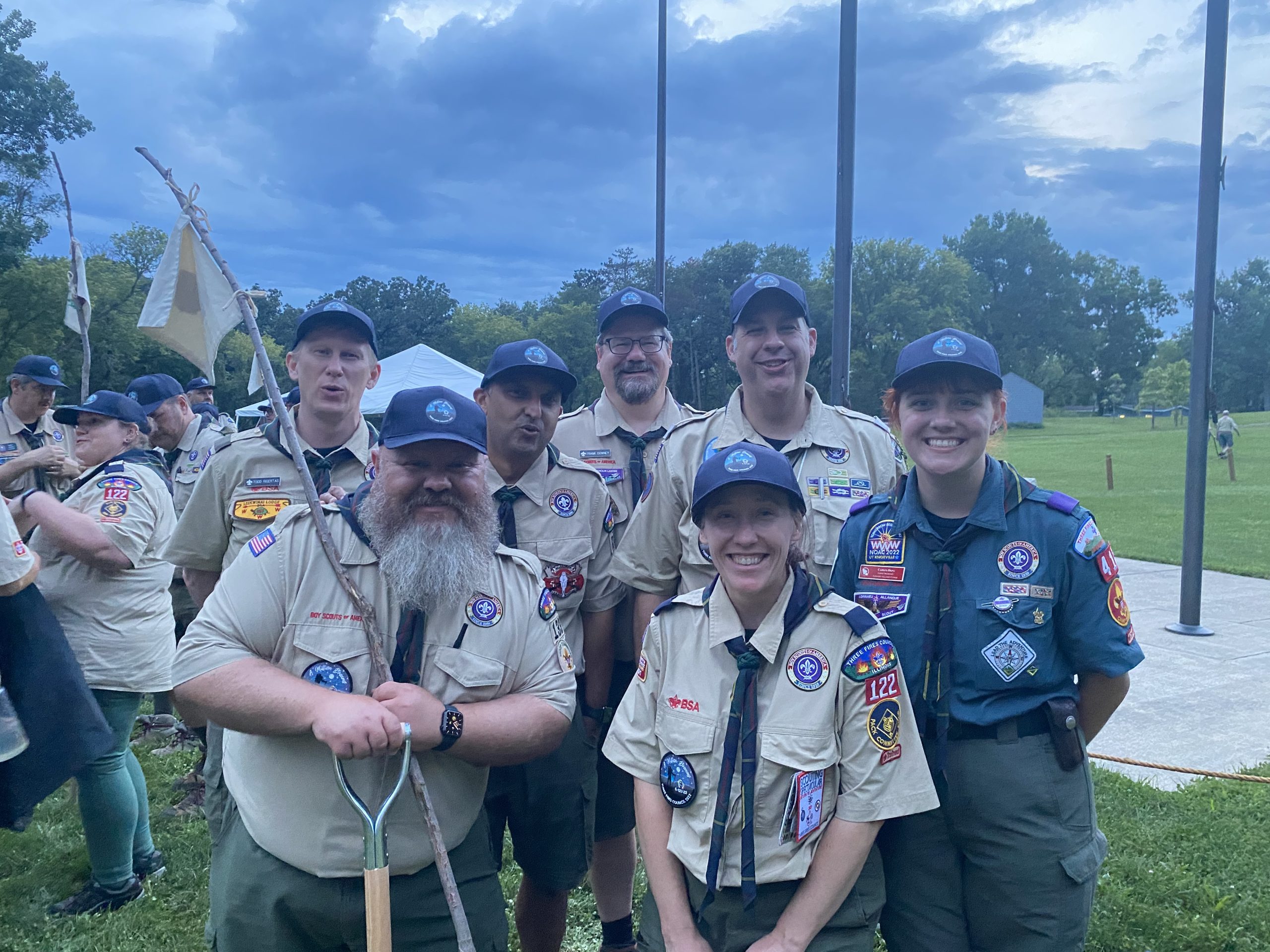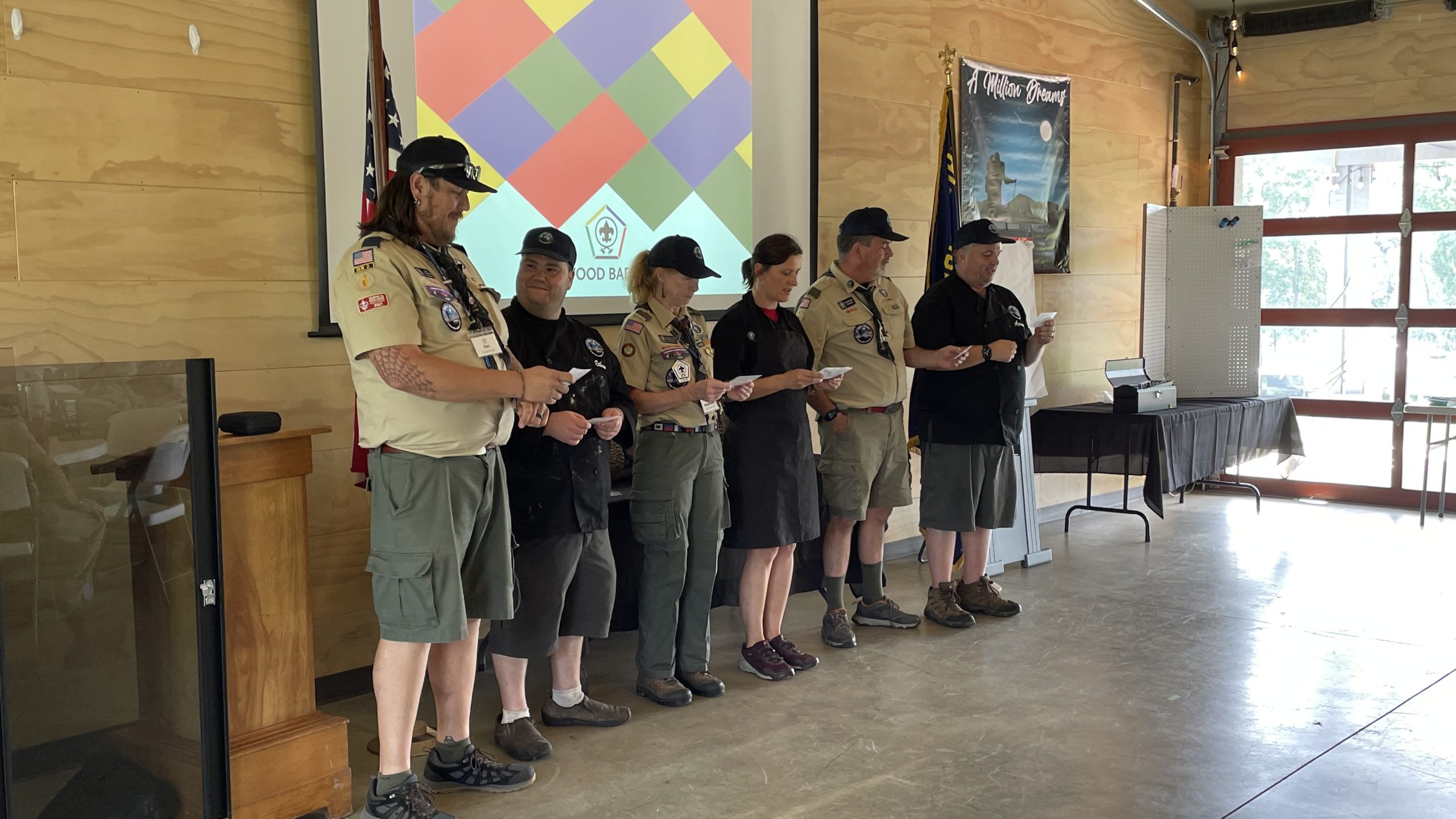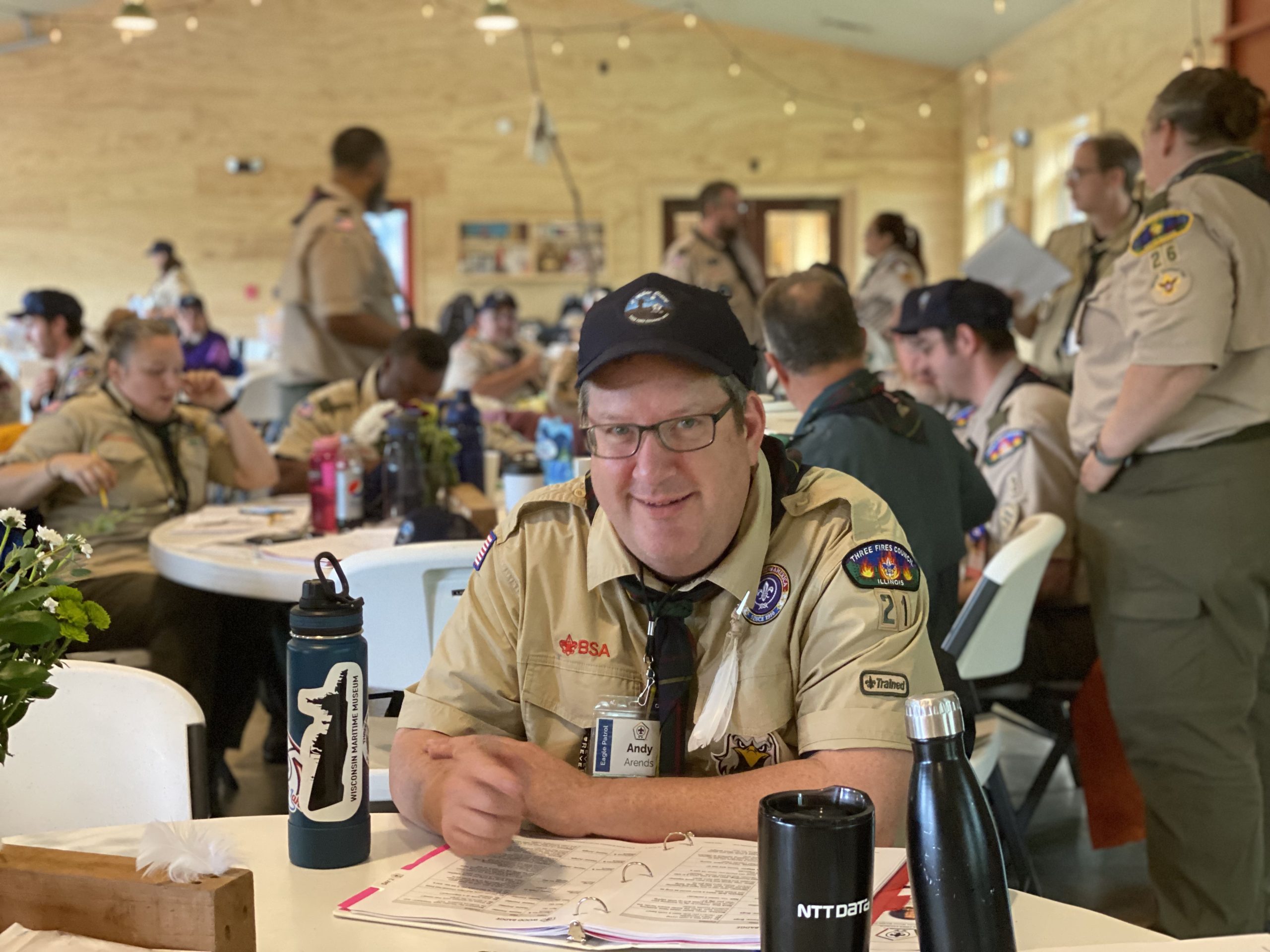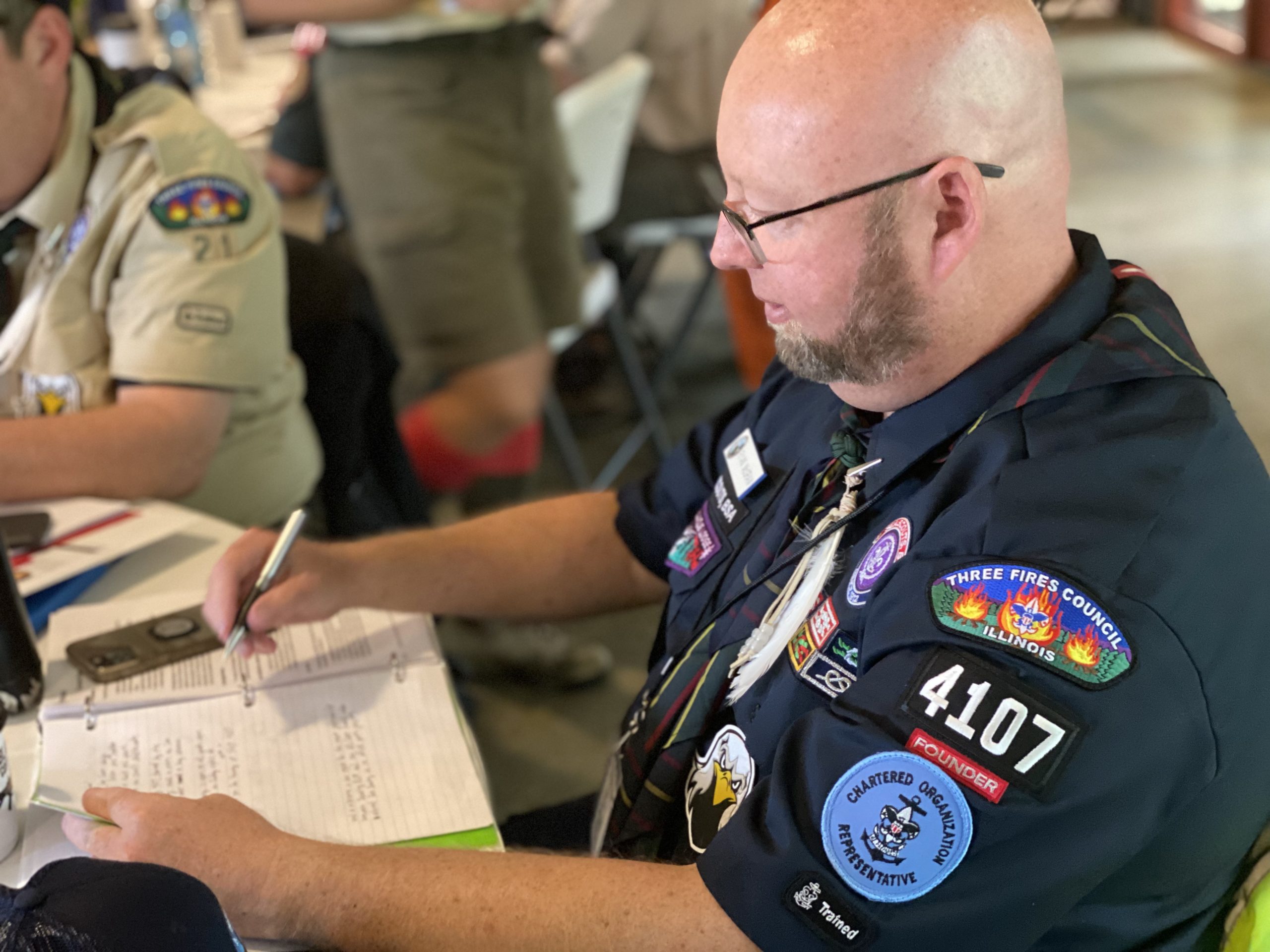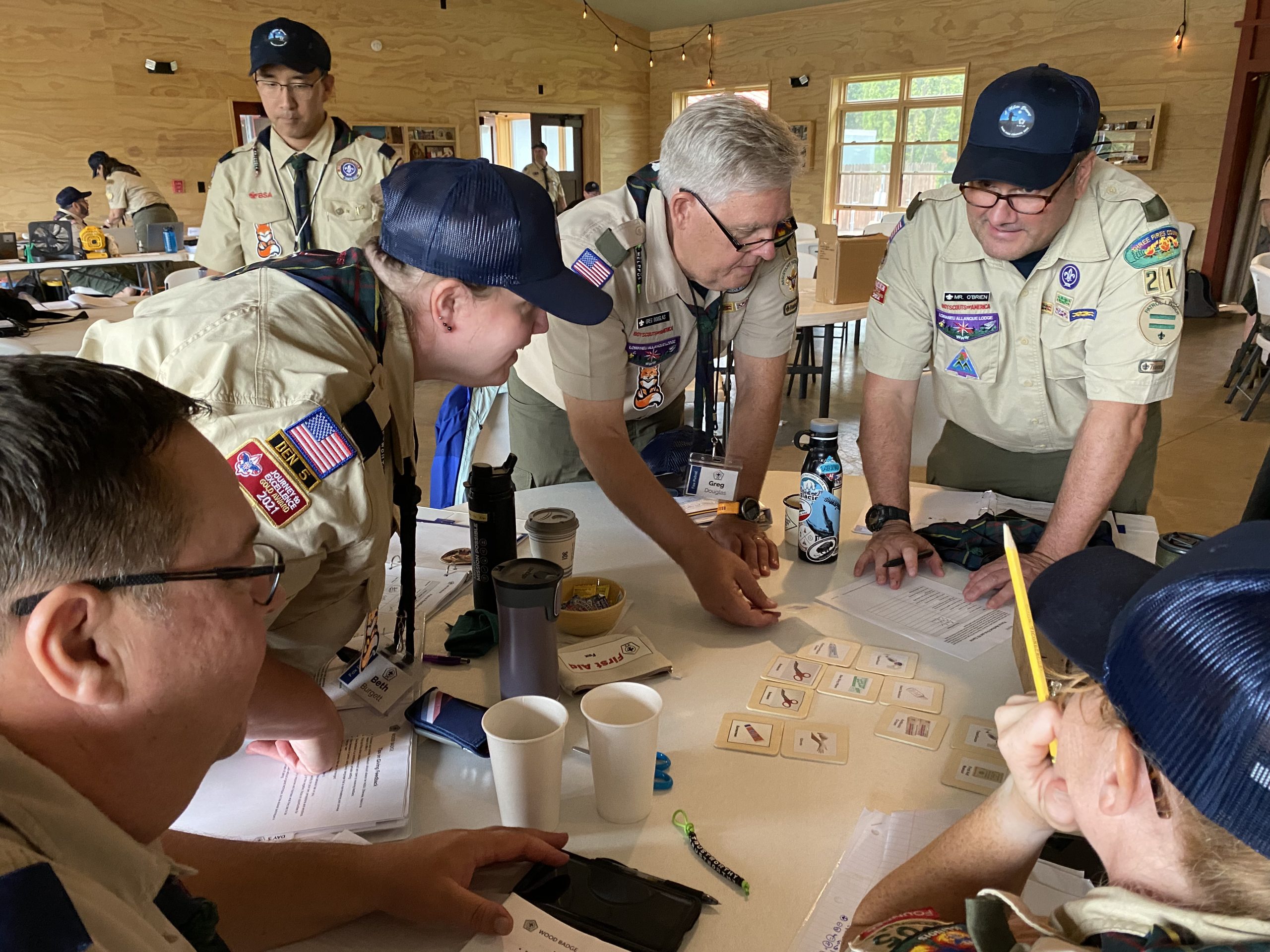Welcome to Wood Badge Central
Welcome to the home of Three Fires Council Wood Badge. We’ve gathered the latest information, relevant links, history and frequently asked questions on the Wood Badge training experience here just for you! Learn about the aims and personal and professional benefits of Wood Badge, connect with fellow Wood Badgers and register for an upcoming course.
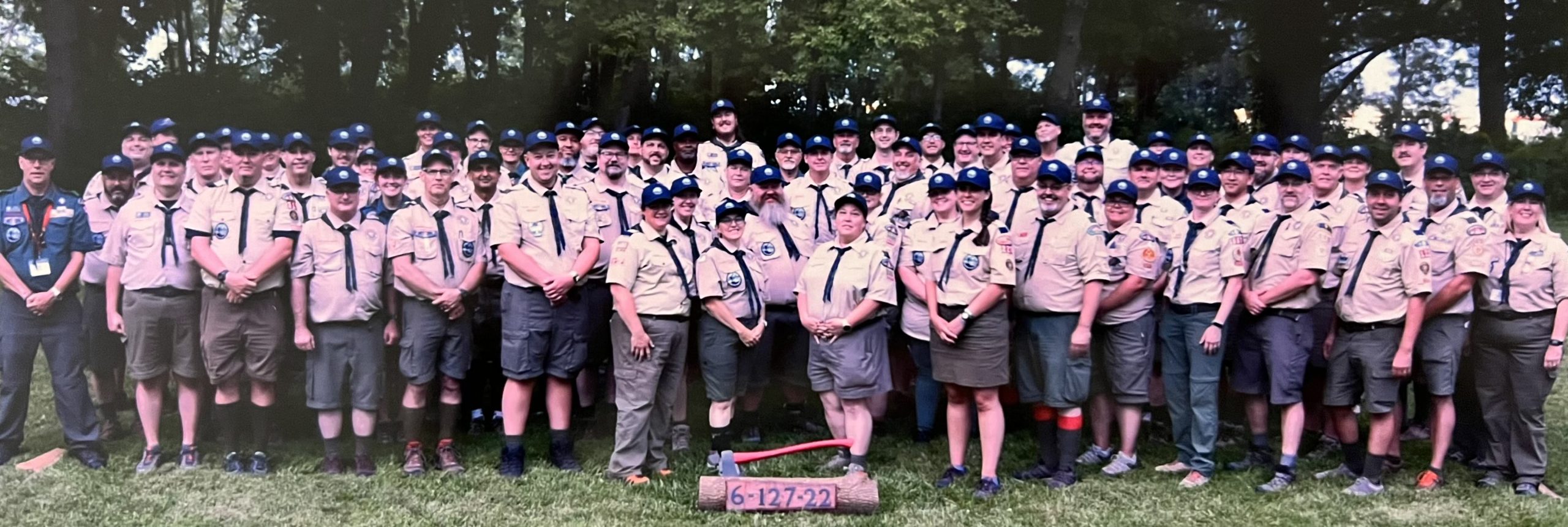
What is Wood Badge?

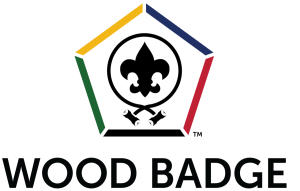
The Wood Badge experience is training for adult leaders from all scouting programs. It provides participants with firsthand knowledge regarding how teams develop and achieve excellence. Participants take part in an active learning process through involvement in planning, development, presentation and assessment. Participants will enjoy a world-class learning experience that will strengthen their long-term commitment to Scouting and provide them with valuable leadership skills.
Wood Badge is a series of fun and educational weekend training activities that develop you into a better Scout leader. There is some physical challenge involved, but nothing that should keep anyone from attending this great opportunity. The time constraints are tight, but only because we jam so many great training activities into the weekends.
What to Expect at Wood Badge
Experience all Scouting Programs as a participant – from Cub Scouting, to Scouts BSA and Venturing
Put the patrol method into practice by camping, cooking and working as a group
Leadership skills development – including listening, conflict resolution and team dynamics
Learn games and activities that will work well in your unit, family and profession
Develop friendships that will last a lifetime through your Wood Badge patrol and staff interactions
Conduct patrol meetings to plan an outdoor experience and put your plan to the test by camping as a Patrol.
Who May Attend?
All Registered adult Scouters from Cub Scouting, Scouts BSA, and Venturing, who meet the following eligibility requirements:
Must be registered adults of the Boy Scouts of America (there is no minimum tenure requirements).
Have not previously attended a Wood Badge course.
Have completed the basic training courses for their Scouting position.*
Have completed the outdoor skills training programs appropriate for their Scouting positions.*
Be capable of functioning safely in an outdoor environment. Successful completion of the Annual Health & Medical Record is required for all participants.
Note that you must attend all sessions. There are no make-up opportunities. If an attendee has to miss any of the sessions they will be dropped from the course and will be asked to return the following year to attend the entire program. This includes attendance at any patrol meetings during the intervening week between the first and second weekend.
*Wood Badge is open to all registered adults who have successfully completed the basic training requirements for their primary position. This generally consists of Fast Start and Position Specific Training. Leader specific training for Scoutmasters, Assistant Scoutmasters, Varsity Coaches and Venturing Advisors includes Introduction to Outdoor Leader Skills. Cub Scout leaders ARE NOT required to have BALOO training to participate in Wood Badge training. For more information on trained leaders, visit National's What Makes a Trained Leader page.
History of Wood Badge
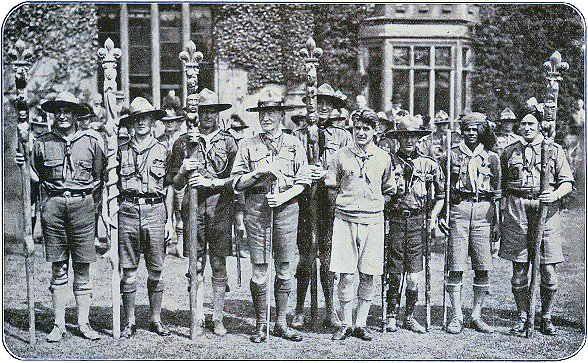 Baden-Powell took the first steps in the training of Scouters by organizing a series of lectures for Scouters in 1911. He made great strides by devising and instituting Wood Badge Training in 1919. Wood Badge recipients now number more than 100,000 throughout the world. The object of the Wood Badge course is to demonstrate, as practically as possible, the aims and methods of Scouting. Upon successful completion of the course the participant receives a certificate and the Wood Badge - two wooden beads worn on a leather thong around the neck. These beads replicate the beads found by Baden-Powell during a campaign in Africa in 1888. They belonged to Dinizulu, an African chieftain. In searching for a suitable recognition for those who completed the first course in 1919, Baden-Powell remembered the beads and decided to present a bead to each participant. At that time, the course was called Wood Badge. The Wood Badge may be worn only with the official field uniform of the BSA. The Scouter to whom it has been awarded may also wear the tan neckerchief with its patch of MacLaren tartan at the back. The Wood Badge neckerchief may only be worn with the accompanying leather neckerchief slide or woggle.
Baden-Powell took the first steps in the training of Scouters by organizing a series of lectures for Scouters in 1911. He made great strides by devising and instituting Wood Badge Training in 1919. Wood Badge recipients now number more than 100,000 throughout the world. The object of the Wood Badge course is to demonstrate, as practically as possible, the aims and methods of Scouting. Upon successful completion of the course the participant receives a certificate and the Wood Badge - two wooden beads worn on a leather thong around the neck. These beads replicate the beads found by Baden-Powell during a campaign in Africa in 1888. They belonged to Dinizulu, an African chieftain. In searching for a suitable recognition for those who completed the first course in 1919, Baden-Powell remembered the beads and decided to present a bead to each participant. At that time, the course was called Wood Badge. The Wood Badge may be worn only with the official field uniform of the BSA. The Scouter to whom it has been awarded may also wear the tan neckerchief with its patch of MacLaren tartan at the back. The Wood Badge neckerchief may only be worn with the accompanying leather neckerchief slide or woggle.

